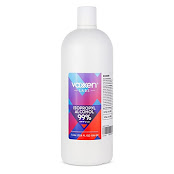Crumble is a type of cannabis concentrate that is known for its crumbly, wax-like consistency. It is made by extracting cannabinoids and terpenes from the cannabis plant using a solvent, such as butane or CO2. The resulting concentrate is then purged of any residual solvent, resulting in a stable and potent product.
One of the main advantages of Crumble is its versatility. It can be consumed using a variety of methods, including dabbing, vaporizing, and even adding to joints or blunts. Its crumbly consistency also makes it easy to handle and measure out, making it a convenient choice for those looking to consume cannabis concentrates.
Crumble is also known for its potency, with THC levels ranging from 50-90%. This makes it a popular choice for experienced cannabis users looking for a strong, long-lasting high. However, it's important to note that crumble is not for everyone, and its high THC content can be overwhelming for those who are new to cannabis or have a low tolerance.
It's worth noting that, as with all cannabis concentrates, Crumble is not without risks. It's important to consume responsibly and to follow all local laws and regulations regarding its use.
Overall, Crumble is a popular and versatile cannabis concentrate that offers a potent, long-lasting high for those looking for a more intense cannabis experience. Just be sure to use it responsibly and familiarize yourself with any potential risks before trying it.
Check out Amazon for a great selection of dab tools and accessories!




Comments
Post a Comment